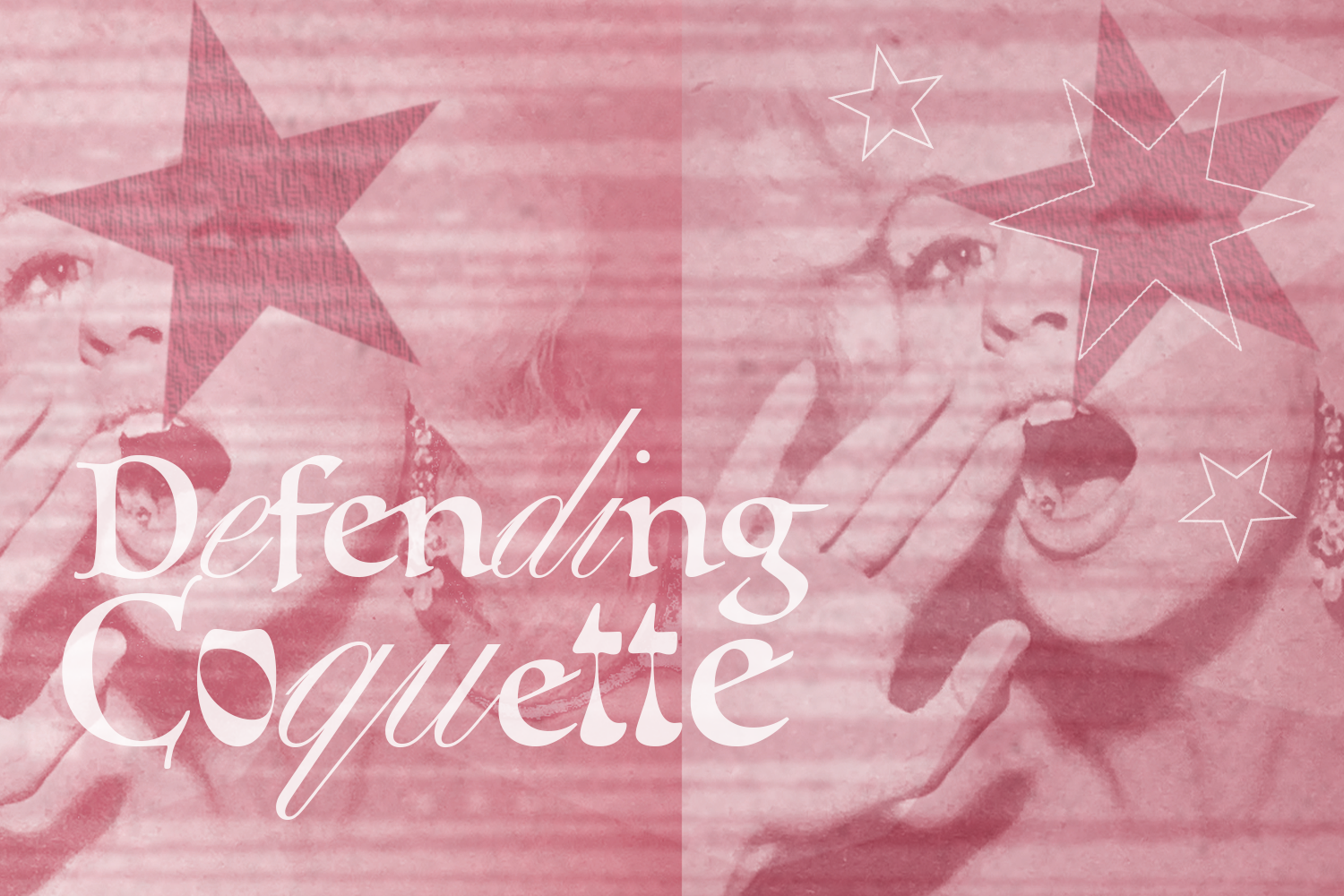If you’ve been on TikTok in the past couple of years, you have probably heard of the popular style trend, coquette, a style that explores the hyper-feminine aspects of fashion. It is characterized as girly, frilly, and flirty but with a sense of elegance that draws it away from being childish and more towards feminine maturity. There are many subcategories within coquette, but most people who indulge in coquette trends are typically seen sporting dainty satin bows, lacy tops, Mary Janes with frilly socks or leg warmers, and Vivienne Westwood pearls. While this all seems like innocent fun and a way for young teens and adults to express their femininity, the coquette style has received much backlash on social media.
The term “coquette” is a French word that initially gained popularity in the 1700s and is defined by Oxford English Dictionary as “a woman who trifles with men’s affections; a woman given to flirting or coquetry.” While this definition represents the original french meaning of the word, it is not reflective of how the term has evolved into a subculture that involves romantic french-inspired fashion and is associated with artists like Lana Del Rey and stores like Brandy Melville. Today’s coquette is someone with a feminine innocence but a mysterious and flirty aura. The modern interpretation of “coquette” started in the 2010s on Tumblr and gained some popularity then, but it reached its peak in the 2020s as it started appearing on TikTok. The sudden boost is a product of the app’s fast-paced nature, allowing its content to gain popularity quickly.
With the coquette trend spreading quickly, the hate for it followed. To acknowledge hate, it is important to distinguish this from constructive criticism. There have been many valid critiques of the coquette community, mainly its exclusivity. When searching “coquette” on Google Images, Pinterest, or TikTok, most results are pale, thin, white girls. This issue is prevalent in many trends, such as fairy-core or dark academia. This lack of diversity often discourages people who do not fit under the “pale, thin, white girl” category from participating in coquette activities and styles because they feel they do not have a place in it. While the media seems to be diversifying in more recent times, the issue remains. This problem is not the fault of the individual who partakes in these trends but rather a more significant societal issue and the algorithms of social media that create an exclusive online environment.
The criticism that social media influencers, mainly on TikTok, have been facing is hardly constructive. Recently the comment sections on videos tagged with “coquette” have been flooded with hate. These online harassers are jumping on the bandwagon of mockery and bullying not rooted in any actual issue within the community or the individual influencers. Many of the young girls posting coquette content are being tagged as “pick me girls” or being accused of adhering to the male gaze when in reality, it is more likely that they are simply presenting themselves in a way that makes them feel pretty and feminine.
Coquette explores the more traditional sides of femininity. There seems to be a notion that this is somehow “anti-feminist.” It is more accurate to say pressuring a woman to be less feminine is equally as “anti-feminist” as pressuring one to be more feminine. The purpose of feminism is freedom and choice. There seems to be a correlation between topics trending among young feminine audiences, such as pop artists, fashion, and makeup, and condescending comments mocking these topics. Coquette is just a style like many other styles and anyone can be a part of it regardless of what social media might have you believe. There is nothing wrong with exploring and expressing one’s femininity at any level as long as it is done for one’s satisfaction and not that of any outside pressures.
Words by Mishi Ali.
Graphic by Eve Friday.

